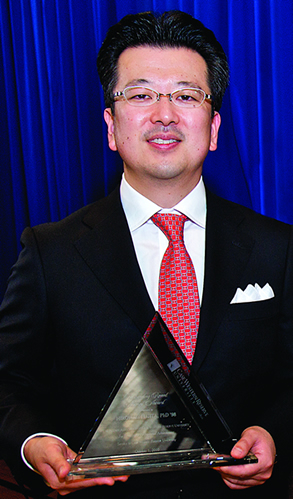
When he was completing his graduate studies in physics at Case Western Reserve University, Hiroyuki Fujita, PhD '98, had several possible futures open to him.
Working with Institute Professor Robert W. Brown, he had carried out basic research on the elementary particles of the universe, exploring the mysteries of quarks and gluons. Brown, who has now been a faculty member for 40 years, recognized Fujita's "terrific promise" as a theoretical physicist and would gladly have recommended him for an academic position in that field.
But their collaboration also extended to applied research. Brown is as devoted to industrial physics as he is to particle theory, and over the years, he and his students have made significant advances in medical imaging, often in partnership with local high-tech companies. Fujita helped carry this progress forward, devoting his doctoral research to improvements in MRI (magnetic resonance imaging) technology. So he could also have pursued a career as a university radiologist or an industry scientist.
As it turned out, Fujita chose business over academia. But it is equally true that business chose him. One of Brown's industry partners, Picker International, was so impressed with Fujita that the company offered him a job and began paying him a full-time salary while he was still writing his dissertation. "They loved Hiro," Brown recalls, "and they wanted to hire him before anyone else did."
During the next seven years, Fujita solidified his reputation in the medical imaging industry. After two years with Picker, he become director of research and development for another local company, USA Instruments, a leading producer of MRI radiofrequency (RF) coils. When that firm was taken over by General Electric, he was appointed director of engineering for GE Healthcare.
All the while, however, Fujita never lost sight of his ultimate goal: he wanted to be an entrepreneur. By 2005, he was ready to start his own business, and Brown provided him with the opportunity.
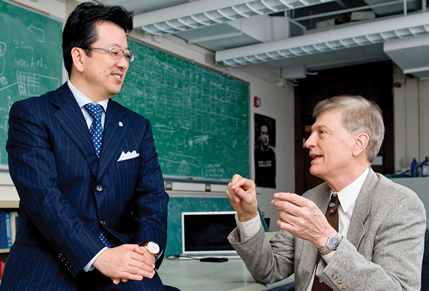
Since then, Fujita has surpassed even his mentor's expectations. Today he is president and chief executive officer of Quality Electrodynamics (QED), which designs and manufactures advanced RF coils and related electronics for MRI scanners. His clients include two giants of the MRI industry, Toshiba Medical Systems and Siemens Healthcare. And his company has grown at a pace indicating that it may someday be a giant itself.
In 2010, for example, QED had annual revenues of $17.1 million—an increase of 2,300 percent since its first year, 2005. When Fujita opened his first facilty in Mayfield Village, he had just four employees. By March 2011, he had 75 employees, and by the start of 2012, he plans to have more than 100.
His success has not gone unnoticed. Two years ago, QED was ranked #11 on Forbes magazine's list of America's 20 Most Promising Companies. It was the only medical device manufacturer to make the list, and the only company led by a first-time entrepreneur. Last July, Fujita was named an Ernst & Young Entrepreneur of the Year in the category "Northeast Ohio-Industrial Manufacturing." And in February of this year, Fujita traveled to Washington, D.C., to accept a National Tibbetts Award from the Small Business Administration, recognizing technological imovations that promote economic growth. After the ceremony, he and his fellow winners were honored at a White House reception.
Amidst all these distinctions, Fujita found special significance in a tribute he received last fall, when Case Western Reserve University presented him with the Outstanding Recent Alumni Award. "When I heard that announcement, I had chills up my spine," Fujita says. "Case Western Reserve has so many wonderful graduates all over the world; they are doing such great work everywhere. For me even to be considered, it's the most wonderful honor one could ask for."
Pursuing Opportunities
Fujita was born in Osaka, Japan, and began his undergraduate studies at Waseda University in Tokyo. As a young man, he considered a career in international diplomacy, a field in which his family has traditionally excelled. But he was also interested in science and mathematics.
While in college, he applied to a study abroad program and spent two months at the University of California, San Diego. He soon realized that, compared to the Japanese educational system, the American system allowed students greater freedom to explore multiple interests, so he decided to earn a degree in the United States. His parents wanted him to return to Waseda, but he couldn't wait to pursue the opportunities he had discovered.
During his senior year at Monmouth College, from 1991 to 1992, Fujita spent a summer and a fall semester doing research in solid-state physics at Oak Ridge National Laboratory in Tennessee. The next fall, in 1992, he started graduate school at CWRU.
Fujita initially worked with Mark Haacke, a radiology professor at University Hospitals, who was developing software for MRI machines. Haacke had once been a postdoctoral fellow in Brown's research group, and they are still collaborators; with two other former colleagues, they have written the definitive textbook on MRI physics. When Haacke accepted a position at Washington University in St. Louis in 1993, Fujita could have gone with him. But he decided to stay at CWRU, and Brown became his advisor.
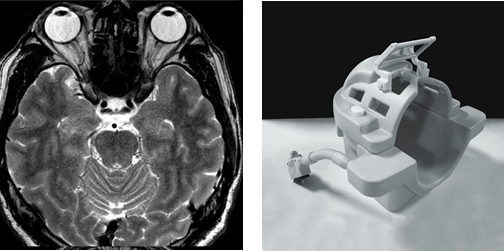
Fujita has never regretted his choice. "Without Bob, I would not be here today," he says, gesturing toward the shelves of plaques and photographs in his office at QED. "I can tell you that, of course, I respect him as a great physicist and teacher. But more important, he is such a wonderful human being. Over so many years now, he has become my father figure. In fact, I spend more time with him than I do with my own father, who is in Japan. He has invited me and my wife and my sons every Thanksgiving, every Christmas, since the very beginning, as if we are part of their family.
"Of course, as people become closer, there will be moments when you have different opinions, and you may have some conflicts," Fujita continues. "Bob often says to me, whenever we have a disagreement, 'Hiro, we are disagreeing, and we have some things to talk about. But you know, when tomorrow comes, you and I will be talking as if nothing has happened.' That's great. I have that insurance, so to speak, so I can be very honest about whatever I want to say to him."
Listening to the Body
When Fujita first came up with his concept for QED, Brown was eager to support him. At the time, Brown had received a grant from Ohio Third Frontier, which promotes economic development by funding advanced research and nurturing early-stage, high-tech companies.
"They wanted me to grow my research group and support industry as well as I could," Brown recalls. "But if instead I put all my resources into building a company, making jobs, that would be fantastic." And so, in 2005, Brown created a position for a director of imaging physics and invited Fujita back to campus to develop plans for QED.
Brown's research group is based in Rockefeller 109, a 300-square-foot office with several desks and no partitions. With Fujita's return, says Brown, this group possessed an expertise in MRI technology unmatched anywhere in the world. "Not only were we able to design better coils than what we saw in industry," Brown explains. "The natural thought was, with Hiro's experience in industry, we could build them ourselves."
When non-scientists hear references to "coils," they sometimes think of springs. But actually, these coils are RF antennas. "We are making antennas that listen to the body," Fujita explains, speaking somewhat metaphorically. "We receive signals from the body, and then we transform the signals into images that doctors can see to diagnose physical conditions."
An MRI machine induces the body to produce these signals through a two-stage process. First, it applies a very strong, uniform magnetic field that affects the alignment of protons, which abound in the body's watery interior. The power of the machine's electromagnets is measured in units called Teslas; today, most MRI scanners are 1.5- or 3-Tesla devices.
In the next stage, the machine adds another, smaller magnetic field in the region of the body that doctors want to study. This is the function of the radiofrequency coils, Fujita says. They transmit a second magnetic field "in a very selected, controlled way," and then receive signals from the affected protons as they return to their original alignments.
One of QED's first innovations was to reduce the size of an electronic device that amplifies these signals once they reach the coils. With the space saved, it was possible to add more channels to increase the coils' sensitivity. Through such advances, QED has made it possible to produce MRI images at higher resolutions than ever before, enabling physicians to diagnose diseases earlier and more accurately than previous technologies allowed.
QED's coils also reduced scanning times. This is a benefit to hospitals, which now can use their MRI machines more efficiently. And it is also a boon to patients, who must lie perfectly still during a scan and tolerate the noisy clatter of the magnets.
A Risky Decision
By February 2006, Fujita was ready to turn QED into a reality. With just four employees, he rented half of a 7,000-square-foot building in Mayfield Village. The office furnishings consisted of "a few chairs, desks, almost nothing." When Fujita brought his wife and two sons to see his new business, one of his sons said, "Dad, you don't have anything here. It's empty."
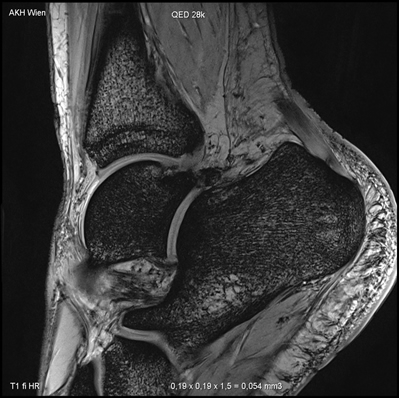
Yet later that year, Fujita won major contracts from Toshiba and Siemens. The "key people" at these corporations already knew and trusted him from his years as an industry scientist. And he promised them that within 18 months, QED would be a fully functioning medical device manufacturer. Among other things, this meant obtaining regulatory approval from the U.S. and Japanese governments, developing QED's manufacturing capacity, instituting internationally recognized quality guidelines, and securing supply and procurement chains.
It was "an extremely aggressive timeline," Fujita concedes, and the stakes were enormous. As he explained in a 2009 interview with Forbes, a failure to keep his promise "would have severely compromised business and personal relationships that I have established over a lifetime. In retrospect, this was a very risky decision, but at the time, I knew that as long as we have clear determination and a mindset to achieve something, we can achieve anything."
In November 2007, on schedule, QED shipped its first products to Toshiba: 6-channel radiofrequency coils for imaging the wrist and hand. By 2008, the company was supplying "industry first" 15-channel knee coils to Siemens, which featured QED products in an industry exposition in Toronto. By then, Fujita had 25 employees. He had leased the other half of his building but was already looking for a new site.
In 2009, QED moved across the street to its current, 28,500-square-foot facility. In one respect, it resembles Rockefeller 109: As Fujita points out, the employees work in an open space, "with no cubicles or offices. We want to share information and enhance communication."
Fujita has developed QED without the support of venture capitalists, banks or other private investors. "I wanted to grow the business my way, based upon my belief," he explained to Forbes. "Venture capitalists often go for return on investment within a short period of time, and my vision for business is not a short-term one." So instead, Fujita has secured $3.85 million in development grants from such sources as the National Institutes of Health, the Small Business Administration, Ohio Third Frontier, the Global Cardiovascular Innovation Center at Cleveland Clinic Foundation and the New Energy and Industrial Development Organization in Japan.
To promote further innovations in MRI technology, Fujita is collaborating with medical centers and universities around the world, including the Cleveland Clinic, the National Institutes of Health, Kyoto University, the German Cancer Institute, the Medical University of Vienna, University Hospital of Freiburg, University of Pittsburgh Medical Center, New York University Medical Center—and Case Western Reserve. For example, CWRU is a partner in a $1 million Ohio Third Frontier grant awarded to QED last June to develop improved RF coils for knee and breast scanning in advanced, 7-Tesla MRI machines.
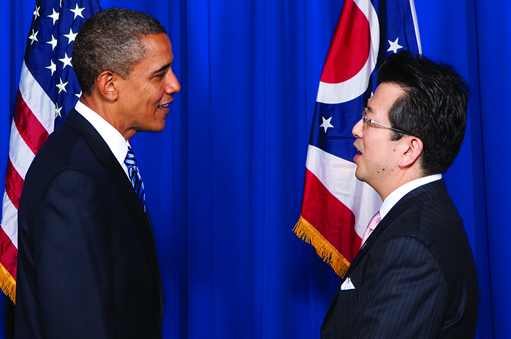
This scanning technology is known as Ultra High Field MRI, and Fujita displayed some of the remarkable images it produces when he gave the keynote address at last year's 125th Anniversary Symposium of the Case Alumni Association. The images were of Fujita's own left knee, revealing a cyst he knew nothing about until he became a test subject for QED's newest coil.
"For the first time in the whole world," he told the audience, "you can zoom into your cartilages and tell what diseases you may have." Ultimately, as he explained to Forbes, he dreams of identifying and eliminating malignant cells before a disease even begins to form.
Shaping the Culture
In 2010, Fujita spent a total of four months overseas, conferring with customers and research colleagues in Europe and Asia. He works 60 to 70 hours a week and doesn't take vacations. But he realized from the start that life as an entrepreneur would demand nothing less.
"Business is very dynamic—it's changing every day," he explains. "You can't say, 'This is good enough; let's stop here.' Once you start a business, you can never stop. That's my philosophy. You don't want to accept the status quo. If you achieve one thing, you have to go above and beyond to become a better company, a better individual. It's a never-ending journey."
As part of that journey, Fujita has now ventured into the field of renewable energy. His company's first offshoot, eQED, is developing solar energy devices called micro-inverters, which convert direct current from a solar panel into alternating current. To manage eQED's operations, Fujita recruited John Patrick, PhD '83, MBA '93, one of Brown's former classroom students, who himself has been a successful entrepreneur and executive in the MRI industry.
In fact, Brown's former students account for at least 20 percent of Fujita's employees, and Brown continues to be one of the company's most active talent scouts. He hasn't only recruited his PhD physicists and postdoctoral fellows. He has also recommended undergraduate students, several of whom Fujita hired as soon as they earned their diplomas.
When he interviews these alumni, Fujita is already confident about their technical skills. But he wants to make certain they share his ethical commitments. The opportunity to shape a corporate culture that would reflect his beliefs was one of his primary motivations for becoming an entrepreneur.
"When you look at today's companies, many of them are driven by profit," Fujita explains. "At the end of the day, they ask, 'How much did we make?' That doesn't quite resonate with me. Of course, you have to be profitable; otherwise, you will not be enabled as an organization. But there is more than that. You want to create an organization where all of the employees feel that they belong to it, and that what they do makes a positive difference in the society. Then, they are happy to challenge themselves to become better, as human beings and as experts. All of these things give meaning to life."
Fujita credits Kazuo Inamori, founder of Kyocera and KDDI in Japan and chairman of the Inamori Foundation and Japan Airlines, with inspiring his ethical beliefs. "I have always wanted to be a great entrepreneur like him," Fujita says. "He also started Kyocera from nothing, and he has struggled, I'm sure, over so many years, looking for what is the right thing to do as a human being, what is right as an organization that is part of society.
"We work with a diverse group of people," Fujita continues. "I came from Japan many years ago. When you look at our company, we have employees from Asia, Europe, and the United States. They come from different backgrounds. But as Dr. Inamori says, if you do what is right as a human being, it doesn't matter what nationality you are, what culture you are from. We can be joined in a collaborative effort to do something great. I think that's the truth."
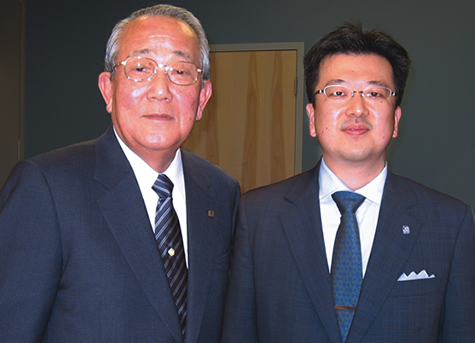
Fujita is now an adjunct full professor in both physics and radiology at CWRU. In addition, he serves on the university's international affairs visiting committee and on the advisory board of the Inamori International Center for Ethics and Excellence, which Kazuo Inamori endowed in 2006.
In March, Fujita was featured in two national broadcasts aired by NHK, Japan's largest TV station, highlighting his success in the United States and including scenes from two public events where he met President Obama. The most recent of these events, a "Winning the Future" forum on small business hosted by the president, was held in Cleveland in February 2011.
After the broadcasts, Fujita received a congratulatory message from the Inamori Foundation, noting that when Dr. Inamori started Kyocera many years ago, he experienced many of the same challenges that Fujita is experiencing today. During Fujita's graduate school days, no one could have imagined that the two men would someday form a relationship through their shared association with Case Western Reserve University.




